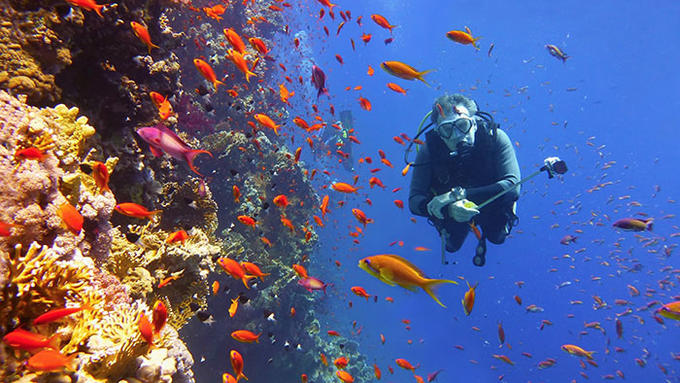How To Do The Great Barrier Reef Like Sir David Attenborough
If, like most of us, you’re a die-hard David Attenborough fan, then chances are you have the Great Barrier Reef on your bucket list. He’s spoken about the reef many times - mostly in a prose-like manner, recalling a love letter to one of his favourite places in the world - but one place on the reef really stole his heart.
Luckily for me, I was able to visit that place recently. And just like Sir David, it stole my heart too. As he said, it really is one of the most spectacular ecosystems in the world.
If the Great Barrier Reef is on your bucket list, you’ll want to do it exactly as Sir David Attenborough himself did. Luckily for you, you can use this article as your guide.

Where Did He Go?
Fun fact: Sir David first visited the reef in 1957 and it burnt such a hole in his heart that 60 years later when asked the dream destination of his final documentary...well, it was obviously the Great Barrier Reef.
Having visited a pretty large chunk of the reef- which spans most of Queensland, Australia’s coastline and is so big it can be seen from space - I’m going to give you the specifics of exactly where he went.

A group of islands speckled along the Southern Great Barrier Reef took his fancy, namely Heron Island, Lady Elliot Island and Lady Musgrave Islands. Unlike the Northern Great Barrier Reef, these islands offer pristine reef and magical snorkeling right off the sand, rather than an outer reef experience you can only access via a pontoon or live aboard experience. In fact, the furthest you’ll need to venture to dive these spots is around 10 minutes off the shore.
In this article, I’ll focus on Heron Island, the site of a full episode of David Attenborough’s Great Barrier Reef.

What Did He Do?
Heron Island sits around two hours off the coast of Gladstone (a one hour flight from Brisbane, the state’s capital). To get there, just jump on the island’s boat service or book yourself a helicopter trip over the reef to get there in thirty minutes and fill your phone up with aerial shots of the reef from above.
As well as being a picture perfect island fringed by turquoise, calm waters and white sand, it’s also home to the University of Queensland’s research station and some of the best dive sites in the world (according to Jacques Cousteau himself)--don’t worry, the dive sites are snorkel friendly as well.

The island is part of National Park, so nature comes first. Join one of the island’s marine biologists for a walk around the island (you can circumnavigate the island in around 30 minutes) as they explain the island’s history and point out the plethora of species you can see from the shore. Think rays, sharks, and more turtles than you could ever imagine just cruising past the shallows.
As the reef here is tidal, you can also join a marine biologist on a guided reef walk at low tide to see the creatures and coral of the Great Barrier Reef without even getting wet.
You can even visit the tree where Sir David filmed many of his scenes while on the island -aptly named the David Attenborough tree - and take a picture of yourself standing exactly where he stood. For any mega fans (me!) this is easily a trip highlight.
When you’re not snorkeling or having your mind blown by a marine biologist, you can pop down to the jetty and watch eagle rays, shovel nosed rays, baby sharks, turtles and more rest in the shallows just before sunset each night. You can even spot humpback whales during their migration.

How Do I Do It?
To experience one of Sir David Attenborough’s favourite places for yourself, chat to one of our friendly Travel Consultants to book a trip for yourself – we can tailor-make the experience just for you so your trip is All Reef, No Grief!
While you’re in town, try and check out Lady Musgrave and Lady Elliot islands too, it’s what David would have done.
If you're thinking of checking out the Great Barrier Reef yourself, give our lovely Travel Consultants a call today who can help tailor-make you a dream holiday!
You Might Also Like:
The Great Barrier Reef: Sea vs Air
8 of the Best Reasons to Visit the Great Barrier Reef




